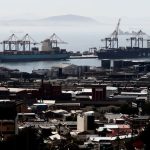Home » Businesses in Europe » Unraveling the Financial Web: Investment Flows and Interconnections Across European Borders
Unraveling the Financial Web: Investment Flows and Interconnections Across European Borders

In today’s interconnected global economy, the flow of investments between European countries is a complex tapestry woven by multinational corporations, economic policies, regulatory frameworks, and shifting market dynamics. The interplay of these elements creates a web of financial ties that significantly impacts the region’s economic landscape.
Investment Flows and Financial Integration
European countries have witnessed a significant surge in cross-border investments, fostering financial integration. This integration is propelled by multinational corporations seeking growth opportunities, diversification, and access to new markets. Investments flow through capital and mergers, acquisitions, and strategic partnerships, creating a network of interdependent economies.
Role of Multinational Corporations
Multinational corporations (MNCs) are pivotal in shaping investment flows across European borders. These entities leverage their global presence and resources to strategically allocate capital, establish subsidiaries, and engage in joint ventures across multiple countries. Their investments stimulate economic activity, create employment opportunities, and foster regional innovation.
Cross-Border Investments and Economic Policies
Economic policies and regulatory frameworks wield considerable influence over cross-border investments. Governments implement policies that attract foreign direct investment (FDI) by offering incentives, tax breaks, and streamlined regulations. These policies can shape the direction of investment flows, encouraging MNCs to invest in specific sectors or regions.

Impacts of Regulatory Frameworks
The regulatory environment significantly impacts investment decisions. Harmonizing regulatory frameworks across European countries has facilitated smoother investment flows by reducing barriers and increasing transparency. However, differences in taxation, labor laws, and financial regulations among countries can still pose challenges and influence investment strategies.
Economic Stability and Investor Confidence
The stability of European economies and geopolitical factors also influence investment patterns. Countries with stable political climates, robust infrastructures, skilled labor forces, and favorable business environments tend to attract more investments. Investor confidence in a country’s economic prospects shapes investment flows.
Challenges and Opportunities
Despite the advantages of increased investment interconnections, challenges persist. Economic uncertainties, trade disputes, geopolitical tensions, and changing regulatory landscapes can create volatility in investment flows. Additionally, disparities in economic development among European countries present challenges and opportunities for investment diversification.
About
Discover the narratives that define the global economic stage. From diplomatic dialogues to trade partnerships, our blog unveils the stories behind economic development and international relations.






























